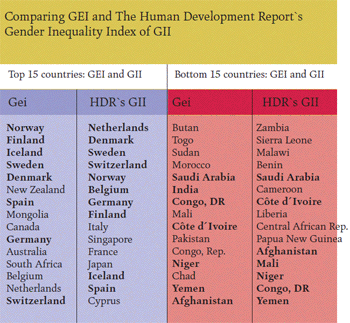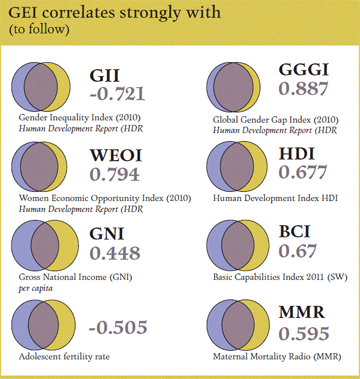Comparing GEI with other Gender Measures
 |
there are other indices that measure the gender gap using different indicators and parameters. The Gender Inequality Index or GII, for example, includes education, parliamentary representation, labor force participation and reproductive health indicators such as maternal mortality, adolescents’ fertility and contraceptive use.
The World Economic Forum developed its own indicator, the GlobalGender Gap Index (GGGI). which measures four social areas: economic participation and opportunity, educational attainment, general health and political empowerment. The Economist Intelligence Unit launched the Women’s Economic Opportunity Index (WEOI) in 2010, covering five dimensions: labour policy and practice, women’s economic opportunity, access to finance, education and training, women’s legal and social status, and general business environment.
Although indices present their distinct emphasis and perspectives in measuring the gender gap, there are similarities as well. A comparison of the top and bottom 15 countries of the Social Watch GEI and the UNDP’s GII shows that 9 countries –Norway, Netherlands, Finland, Denmark, Iceland, Sweden, Switzerland, Germany and Spain– are common in the list of top performers, while 6 –Saudi Arabia, India, Congo DR, Côte d’Ivoire, Niger, Yemen and Afghanistan– are common in the list of bottom performers.
 |


